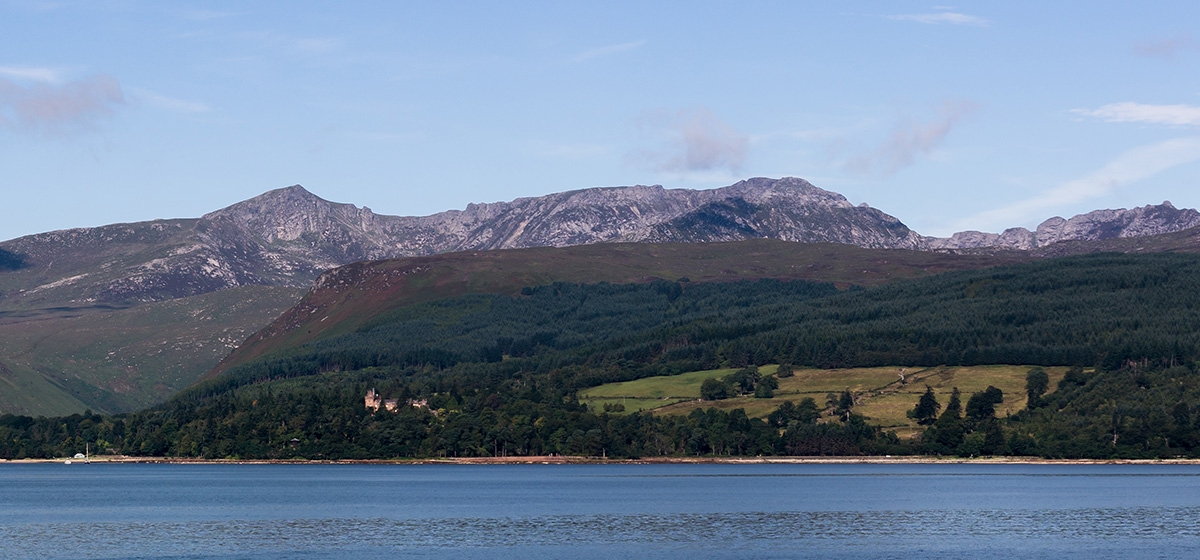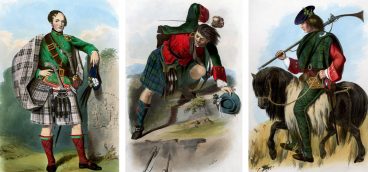The Mystery Deepens

My inauspicious arrival on the Isle of Arran seemed to have perturbed Lady Jean Fforde not at all.
“It’s the smell, dearie,” she said, pounding my back like a jackhammer as I retched into the boxwood. “You’ll be used to it soon enough.”
And she was right. Three whiskies later (drunk neat, the Scots never having heard of ice), I was a new man. While I was enjoying this healthful and refreshing beverage, Lady Jean explained the vile smell that had followed her out the door.
It seemed that she had, that morning, come across a lamb that had been abandoned. The nights on Arran are very cold and very damp, and the lamb would surely die if its body temperature couldn’t be raised and fast.Standard operating procedure on Arran for dealing with this predicament, believe it or not, is to shove the hapless lamb into the kitchen oven and fire up the heat.
Now, in the first place, if you have ever smelled wet lamb you know that it makes wet dog resemble Chanel No. 5.
In the second place, as Lady Jean put it, “The poor creature was pooping and peeing all over the place.”
I smiled benignly, three whiskies to the wind on an empty stomach and feeling no pain.
Speaking of stomachs, we entered the dining room for dinner and Lady Jean sat a huge meat pie on the table. I stared at it wide-eyed. “Oh!” said Lady Jean, laughing like a drunk sailor. “You’re wondering if it’s lamb pie! Not to worry!”
* * *
As the unfortunate lamb discovered, it gets very cold on Arran at night and Strabane had no central heating. When I went to bed I observed that someone had thoughtfully placed a hot brick on the bed, which kept me toasty warm. The next morning, still in my bedroom, I tried to pour milk from the pitcher into my tea, but first had to break through the ice.
Later, Charles drove me around the island and briefed me on the “emergency.” Arran is a fascinating place, so I’ll pause here and fill you in.
The Isle of Arran is kidney-shaped, about 20 miles long and 10 miles wide and not quite 5,000 people live there.
Arran is often referred to as “Scotland in miniature” because, just like on the mainland, the highlands are in the north and the lowlands are in the south. Charles and I started in the north, motoring up the steep grade of Goatfell, the nearly 3,000-foot peak that dominates the north of Arran.
The surrounding hills were rough and irregular, tricking the eye. At one point Charles stopped the car, put the gearshift in neutral, and set the emergency break.
“When I release the break,” Charles asked, “what will happen?”
The car was at that point nosing downhill, so I naturally guessed that, when the brake was released, the car would roll forward. Charles released the brake and the car rolled slowly backward, apparently being pulled uphill by some invisible force.
“Electric incline,” Charles said mysteriously, and off we went.
There are only three roads on Arran—two roads and a track is more like it. The main road runs around the circumference of the island, and that’s the one we took, heading counterclockwise around Arran.
As we drove, Charles talked about the ancient history of Arran, but I was listening with only one ear because, every way I looked, there was something enchanting. Around this turn was a dramatic cliff with the waves of the North Sea crashing into it. Around that turn was a quiet glen, shady and magical. Over the next hill were a series of standing stones and stone circles, placed there by a mysterious people back in the Stone Age, more than 5,000 years ago. There were ruined castles everywhere.
I was thinking that it had been very difficult to get to Arran from Pittsburgh, and undoubtedly it would be very difficult to get back. Why not just stay here forever?
Meanwhile we had turned onto the track, a “road” that runs across the middle of the island. There are numerous bridges on the track, and most of them are curved. I don’t mean they are arched, I mean they are curved.
“What’s with the curved bridges?” I asked.
“Keeps the witches from crossing them,” said Charles.
Soon Charles began speaking of his mother, so I paid attention. As a girl, Lady Jean had divided her time between Buchanan Castle on the mainland, seat of the Dukes of Montrose, and Brodick Castle on Arran, seat of the Dukes of Hamilton. Her favorite playmate was young Prince Rainier, who loved Arran and visited almost every year as a boy.
Gradually, the charms of Arran won out and Lady Jean moved permanently to Brodick Castle, which sits at the foot of Goatfell and dominates the small town (pop. @ 600) of Brodick.
When World War II broke out, Lady Jean volunteered for the Wrens, but failed the physical. (She was probably too big for the uniforms.) Annoyed, she prevailed on her father, the 6th Duke of Montrose, to find a way for her to help out with the war effort.
The Duke spoke to Lord Mountbatten and Lady Jean soon found herself at Bletchley Park, the site of Britain’s codebreaking efforts directed at the German Enigma and Lorenz ciphers.
Alan Turing, the animating brain at Bletchley Park and the inventor of computer science and artificial intelligence, was prosecuted after the war because he was gay—a crime in Britain at the time. Lady Jean, however, described him to me as “a lovely man, very pleasant to work for, but obviously not the marrying kind.”
But as for the exciting work of breaking German codes, it left Lady Jean cold. “The work,” she told me, “was boring, the people unpleasant, and the food inedible.”
In any event, Lady Jean’s fairy tale life was about to come a cropper, as we’ll see next week.





